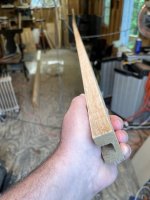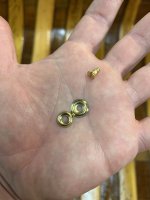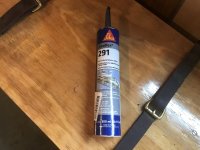I decided against the dark red- too many of my vessels and vehicles are red. This is the first coat of Kirby Flag Blue. Too dark for me- gonna add a bit of white on the next round after sanding.


I was able to get my hands on some long quarter sawn white oak for the outwales. It should be very pretty after some more sanding and varnishing. Running the piece through a router table makes the lip to cover the canvas against the ribs nicely. I will rip it down the middle and sneak up on the lip till I get the right overhang.



I was able to get my hands on some long quarter sawn white oak for the outwales. It should be very pretty after some more sanding and varnishing. Running the piece through a router table makes the lip to cover the canvas against the ribs nicely. I will rip it down the middle and sneak up on the lip till I get the right overhang.
















